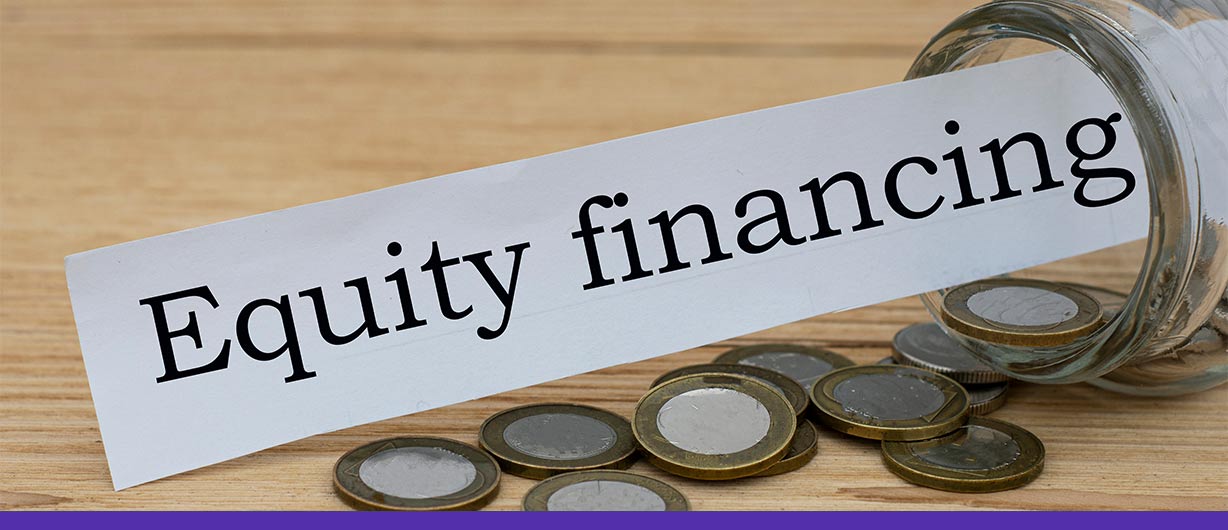September 14 2023 | By Farwah Jafri | 7 minutes Read

Equity, often referred to as shareholders’ equity (or owners’ equity for privately held companies), denotes the sum of money that would be distributed to a company’s shareholders in the event of a complete liquidation after settling all the company’s debts. In the context of an acquisition, it signifies the value of a company’s sales minus any outstanding liabilities not transferred as part of the sale.
Furthermore, shareholder equity can be viewed as a company’s intrinsic value and may sometimes serve as payment-in-kind. It also signifies the proportional ownership interest in a company’s shares. Today’s post is going to answer the common questions regarding equity and why it is important in businesses.
Equity in business is a component featured on a company’s balance sheet and is a fundamental piece of information routinely utilized by analysts to evaluate a company’s financial stability.
By comparing concrete figures encompassing a company’s assets and liabilities, the equity equation, “assets minus liabilities,” provides a clear overview of a company’s financial position, making it easily interpretable for investors and analysts alike. Equity is the capital a company raises, subsequently used for acquiring assets, investing in projects, and financing operations. Companies typically obtain capital by issuing debt (such as loans or bonds) or equity (through stock sales). Investors often favor equity investments due to their potential for sharing in a firm’s profits and growth.
Shareholder equity can be either positive or negative. A positive equity figure indicates that the company’s assets exceed its liabilities. Conversely, negative shareholder equity implies that the company’s liabilities surpass its assets, and if this persists, it can signify balance sheet insolvency. Typically, companies with negative shareholder equity are viewed by investors as riskier or less secure investments.
To find equity in business, you can use a simple formula:
Shareholders’ Equity= Total Assets – Total Liabilities
This information is typically found on the balance sheet, and you can follow these steps:
1. Locate the company’s total assets on the balance sheet for the given period.
2. Find the total liabilities listed separately on the balance sheet.
3. Subtract total liabilities from total assets to get the shareholder equity.
4. Remember that total assets equal the sum of liabilities and equity.
Shareholder equity can also be expressed as the company’s share capital and retained earnings minus the value of treasury shares, although this method is rare. Both methods provide the same figure, but using total assets and total liabilities gives a better picture of a company’s financial health.
Retained earnings are a part of shareholder equity in business, representing the portion of earnings that haven’t been paid out as dividends. Think of it as a company’s savings account, growing over time as profits are set aside for future use. For well-established companies, retained earnings often become the largest component of shareholder equity.
Treasury shares are stock that a company buys back from its shareholders. This is done when the company needs help finding profitable ways to invest all its available capital. These bought-back shares become treasury shares, and their value is recorded in a treasury stock account. Companies can later reissue these shares to raise funds if needed.
Shareholders’ equity is often seen as a company’s net assets—what shareholders would receive if it sold all its assets and paid off its debts.
Here’s an example from Exxon Mobil Corporation’s balance sheet as of September 30, 2018:
– Total assets: $354,628
– Total liabilities: $157,797
– Total equity: $196,831.1
To calculate shareholder equity, use the formula:
Shareholder Equity = Total Assets ($354,628) – Total Liabilities ($157,797) = $196,831.1
Private equity involves evaluating companies that are not publicly traded. Simply put, it’s about figuring out the value of businesses that aren’t on the stock market. Private companies calculate their worth differently instead of using share prices like public companies.
Private equity usually applies to companies that are not publicly traded. To estimate their value, we look at their balance sheets, which show the difference between what they own and what they owe. Privately held companies can raise money by selling shares to private investors like pension funds, universities, insurance firms, or wealthy individuals.
Private equity also includes deals where funds and investors buy private companies or purchase parts of public companies through leveraged buyouts (LBOs). In LBOs, a company gets a loan from a private equity firm to buy another company’s division, with the acquired company’s assets or cash flows securing the loan. Mezzanine debt is another type of private loan, often involving a mix of debt and equity.
Private equity plays a role in different stages of a company’s life. Young companies without revenue usually get money from friends, family, or angel investors. Venture capitalists enter when a company has a product or service ready for the market. Big tech companies like Google and Apple started this way with venture capital funding.
Venture capitalists (VCs) provide most private equity financing to early-stage companies in exchange for a share of ownership. They often get involved in guiding the company as well. VCs aim for big returns and typically exit their investments within five to seven years. An LBO is another common form of private equity financing that occurs as a company matures.
Private Investment in a Public Company (PIPE) is different, where private investors buy a company’s stock at a lower price to raise capital.
Only some people can invest in private equity. Only “accredited” investors with a net worth of at least $1 million can participate in private equity or venture capital partnerships. For others, private equity exchange-traded funds (ETFs) are an option.
Home equity is like the value you own in your home. It’s the part of your home you own, which you can calculate by subtracting your mortgage debt from your home’s value. Your equity increases as you make mortgage payments, and your home’s value increases.
Homeowners often use their home equity as collateral to get a home equity loan or line of credit (HELOC). This allows them to borrow money from their property. For instance, say Sam owns a house worth $175,000 and owes $100,000 on the mortgage. Sam’s equity in the home is $75,000, which is the home’s total value minus the mortgage debt.
Brand equity refers to the value of a brand, especially for big companies. It’s not just about physical assets but also includes things like a company’s reputation and how well-known it is. Over time, a brand can become very valuable through advertising and building a customer base. For instance, people might choose a Coke over a generic cola because they like the taste or trust the brand. This preference means that Coca-Cola has brand equity.
There’s also something called negative brand equity, which is rare. It happens when people are willing to pay more for a generic or store-brand product than a particular brand because of bad publicity, like a product recall.
Equity usually means ownership of something, like stocks in a company. Return on equity (ROE) is a financial measure that shows how well a company uses its assets to make profits. It’s like looking at the return on what the company owns.
By now you must have known the answer to ‘what is equity?’
Equity is of utmost importance because it signifies the value of an investor’s ownership in a company, determined by their shareholding percentage. Holding stock in a company offers shareholders the opportunity for capital appreciation and dividend income. Equity ownership also grants shareholders the right to vote for corporate decisions and board of directors’ elections. These advantages associated with equity ownership foster ongoing shareholder interest in the company.
Simplify your business finances with Monily’s accounting and financial solutions. Contact our team of experienced professionals now for personalized assistance, or simply head to https://monily.com/mfccalendly book a complimentary consultation.
Also Read: Opening Balance Equity And Its Importance
Subscribe for business tips, tax updates, financial fundamentals and more.
MORE BLOGS

Ever wondered “What are advisory shares and why do I need to learn all about them?” The answer lies in the question. An advisory share is […]
Learn More →
How can you see a snapshot of your business’ financial situation at any time? You can use a document called a balance sheet. This special report […]
Learn More →
Equity financing might be an appealing option if you’re a small business owner searching for funding to fuel your company’s expansion. However, before delving into the […]
Learn More →